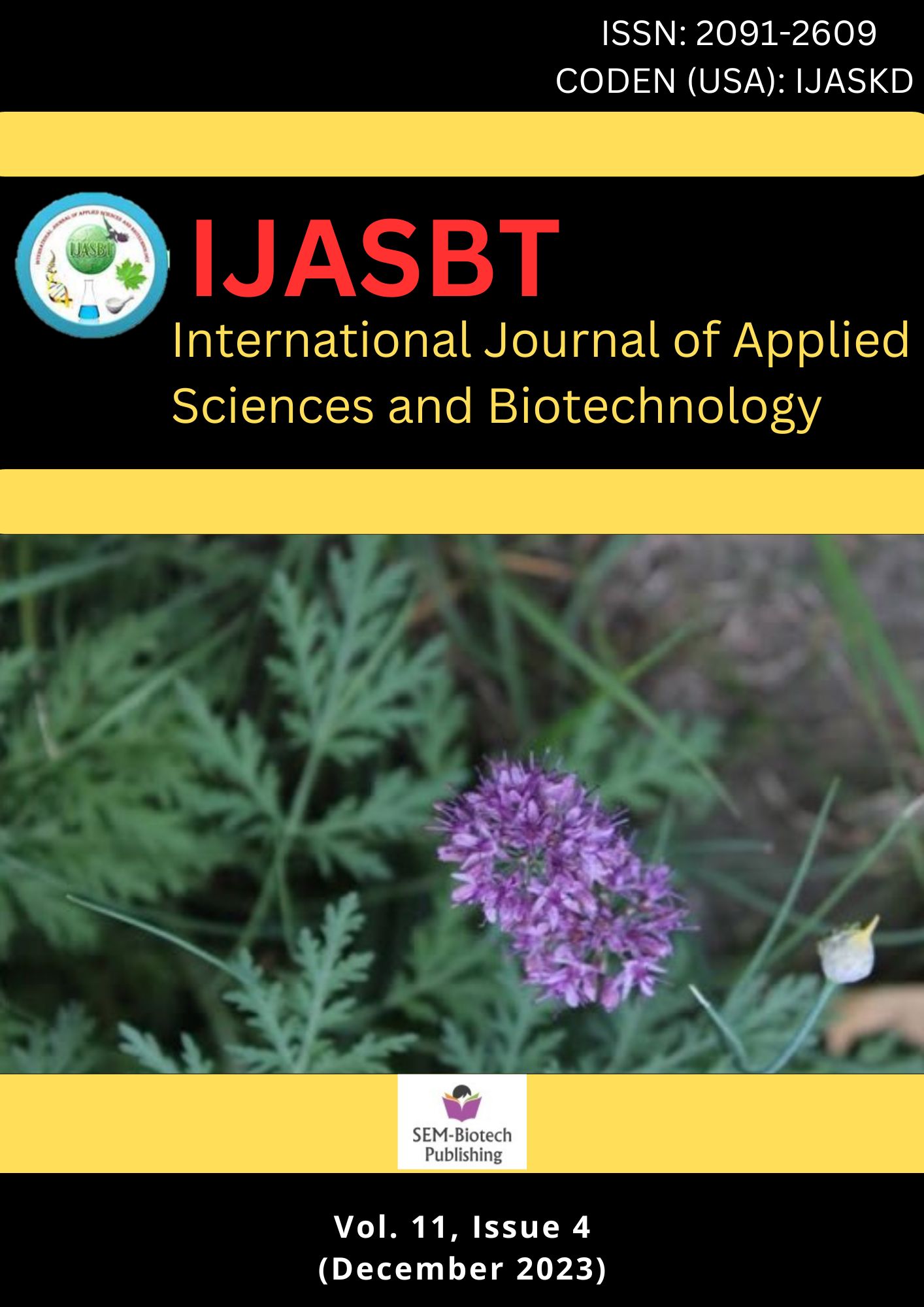Antimicrobial Activity and Phytochemical Screening of Traditional Medicinal Plants
DOI:
https://doi.org/10.3126/ijasbt.v11i4.61161Keywords:
Plant extract, Phytochemical, Antimicrobial activity, Minimum Inhibition ConcentrationAbstract
In Nepal, traditional medicinal plants and herbs have long been relied upon for treating various diseases. This study was aimed to explore the antimicrobial properties of commonly used traditional medicinal plants. This study was conducted from December 2022 to June 2023 at the Department of Microbiology, St. Xavier's College, Maitighar, Kathmandu. In this study, antimicrobial property of 12 plants were tested against four ATCC cultures of bacteria- Staphylococcus aureus (ATCC 6538P), Staphylococcus epidermidis (ATCC 12228), Escherichia coli (ATCC 8739) and Pseudomonas aeruginosa (ATCC 9027). The extracts were prepared using Soxhlet's apparatus with ethanol and distilled water as solvents. The ethanolic extract of S. aromaticum had the highest percentage yield The ethanolic extract of O. sanctum showed highest potential against S. aureus with a zone of inhibition of 21mm. The ethanolic extract of S. aromaticum demonstrated antimicrobial activity against S. aureus, E. coli, P. aeruginosa, and S. epidermidis, with respective zones of inhibition of 18mm, 16mm, 18mm, and 20mm. The distilled water extract of A. marmelos displayed the highest antimicrobial activity against E. coli, with a zone of inhibition of 18mm. Phytochemical screening revealed that both extracts of S. aromaticum had the highest presence of phytochemicals. The ethanol extract of Z. armatum exhibited the highest antibacterial activity, with a minimum inhibitory concentration (MIC) value of 2mg/ml against S. aureus. The study of the selected plants extracts confirmed their efficacy as natural antimicrobials against the tested organisms, suggesting their potential for novel drug development in treating infectious diseases.
Int. J. Appl. Sci. Biotechnol. Vol 11(4): 186-196.
Downloads
Downloads
Published
How to Cite
Issue
Section
License
Copyright (c) 2023 International Journal of Applied Sciences and Biotechnology

This work is licensed under a Creative Commons Attribution-NonCommercial 4.0 International License.




